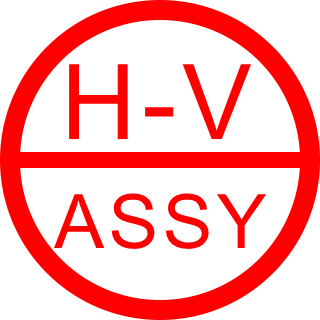Dry-Type Transformer Structure and Manufacturing Technology

1. Dry-Type Transformer – Detailed Structure Breakdown
| No. | Component | Materials & Construction | Function |
|---|---|---|---|
| 1 | Core | Cold-rolled grain-oriented silicon-steel laminations, 0.2–0.3 mm thick, 45° step-lap stacking, coated with varnish | Provides magnetic flux path; minimizes core losses and audible noise |
| 2 | HV winding | Copper or aluminum conductors, multi-layer cylindrical or continuous disc; epoxy-resin encapsulation | Steps voltage up; high dielectric strength and short-circuit withstand capability |
| 3 | LV winding | Copper or aluminum foil, foil-wound or layer-type; H-class insulation, VPI vacuum-pressure impregnation | Steps voltage down; excellent heat dissipation and mechanical strength |
| 4 | Insulation system | Epoxy resin, glass fiber, insulation paper, insulating cylinders, etc. | Isolates HV & LV windings from core and each other; moisture-proof, heat-resistant, <5 pC partial discharge |
| 5 | Cooling system | Natural air (AN) or forced air (AF) with cooling ducts, fins, and optional fans | Removes heat; keeps operating temperature within safe limits |
| 6 | Fastening & support | Metal or epoxy bolts, clamps, spacers, tie bars | Secures core and windings; prevents mechanical vibration |
| 7 | Enclosure & protection | Steel or aluminum sheet, protection class IP20/IP23, optional fire-/explosion-proof design | Protects internal parts against dust, moisture, and mechanical impact |
2. Dry-Type Transformer – Detailed Manufacturing Process
| No. | Process Stage | Key Steps & Technical Description | Quality-Control Checkpoints |
|---|---|---|---|
| 1 | Design & Preparation | Electromagnetic design, structural design, material selection (silicon steel, Cu/Al wire, epoxy resin, etc.) | Design parameters must match rated power & voltage; materials must satisfy H-class standards |
| 2 | Core Fabrication | Slitting → 45° step-lap stacking → varnish coating → clamping | Gap ≤0.5 mm; core loss & noise ≤55 dB |
| 3 | Winding Fabrication | Conductor cutting → winding (HV: multi-layer cylindrical/continuous; LV: foil-wound) → VPI → drying | Turn count tolerance ≤±0.5 %; no voids; partial discharge ≤5 pC |
| 4 | Insulation Treatment | Dip or vacuum-pressure impregnation → curing → epoxy encapsulation → secondary curing | Uniform coating; no cracks; H-class (180 °C) thermal rating |
| 5 | Assembly | Core & winding assembly → terminal installation → lead soldering → enclosure mounting | Concentricity ≤1 mm; secure leads; reliable grounding |
| 6 | Factory Testing | Ratio, no-load loss, impedance, power-frequency withstand, lightning impulse, partial discharge, temperature-rise test | All values must comply with GB/T 1094.11-2022 (IEC 60076-11 equivalent) |
| 7 | Packing & Transport | Anti-shock wooden crate → desiccant → internal bracing → installation guidance on site | Prevent moisture ingress & mechanical damage; check IR upon arrival |
3. Summary & Recommendations
Dry-type transformers are oil-free, fire-resistant, environmentally friendly, and low-maintenance, making them ideal for high-rise buildings, subways, hospitals, data centers, etc. Manufacturing demands strict control over insulation quality, winding accuracy, core assembly, and noise suppression. Compliance with international standards (IEC 60076-11 / GB/T 1094.11) is essential.
Dry-Type Transformer – Production Equipment Corresponding to Each Manufacturing Step
| Manufacturing Stage | Key Process | Required Equipment | Equipment Function & Features |
|---|---|---|---|
| 1. Design & Preparation | Electromagnetic calculation, structural design, process documentation | • Dedicated transformer design software (e.g., ANSYS Maxwell, TransDesign) • 3-D CAD/CAE workstation | Performs electromagnetic field, temperature-rise, and short-circuit force calculations; generates BOM and routing sheets |
| 2. Core Fabrication | Slitting, cross-cutting, deburring, 45° step-lap stacking | • CNC automatic slitting line (with tension control) • 45° automatic cross-cut & stacking line (step-lap function) • Deburring machine • Core turning & clamping rig | Maintains sheet dimension accuracy ±0.1 mm; gap ≤0.5 mm; reduces no-load loss & noise |
| 3. Winding Fabrication | HV winding, LV foil winding, lead welding | • Automatic HV winding machine (tension control + layer-insulation auto-laying) • LV foil-winding machine (closed-loop tension + edge trimming) • TIG/argon-arc welder (Cu-Cu or Cu-Al joints) | Turn count tolerance ≤±0.5 %; neat layer alignment; foil edges free of burrs; low-resistance, crack-free welds |
| 4. Insulation Treatment | VPI vacuum-pressure impregnation, resin casting or coating | • VPI tank (vacuum ≤50 Pa, pressure 0.6–0.8 MPa) • Vacuum resin-casting system (with film degassing) • Curing oven (hot-air circulation uniformity ±3 °C) | Removes trapped air; full resin penetration; uniform insulation thickness; Class H thermal rating |
| 5. Final Assembly | Core-winding set, lead connection, enclosure mounting | • Non-magnetic stainless-steel assembly table • Hydraulic lift cart (5–20 t capacity) • Torque wrench (accuracy ±3 %) • Laser concentricity gauge | Ensures core-winding concentricity ≤1 mm; lead torque per process sheet |
| 6. Factory Testing | Performance & withstand tests | • Integrated transformer test set (power analyzer, variable-frequency supply) • Power-frequency HV tester (0–100 kV adjustable) • Lightning-impulse generator (1.2/50 µs wave) • Partial-discharge detector (sensitivity ≤1 pC) • Thermal imaging camera | Auto-records no-load loss & impedance; completes all tests with one setup; full traceability |
| 7. Packing & Dispatch | Drying, vacuum packing, crating | • Vacuum drying tank (vacuum ≤10 Pa, 120 °C) • Vacuum packing machine + automatic desiccant dispenser • Auto-nailing/steel-strapping crating line | Guarantees IR ≥1000 MΩ before shipment; moisture-proof & shock-proof transport |
